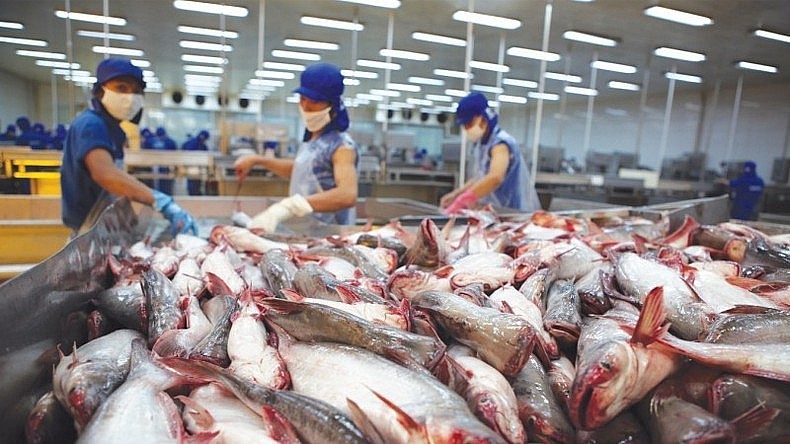Rising shipping costs, trade defence lawsuits and the European Commission’s yellow card on illegal, unreported and unregulated fishing (IUU) are having a strong impact on Vietnamese seafood exporters.
|

|
| Vietnam's seafood exports are expected to recover in the fourth quarter of 2024. |
Shipping costs eat into profits
With frequent export shipments to the US and the EU, Taika Seafood Corporation is deeply worried about rising ocean freight costs. Taika General Director Do Ngoc Tai shared that the shipping costs for the US and the EU surged by 40% and 60%, respectively.
Chairman of Sao Ta Foods Joint Stock Company Ho Quoc Luc said the ocean freight rates for North America and Western Europe doubled compared to the off-peak period. Such increases have seriously affected his company.
The reason is the conflict in the Red Sea, where the majority of customers avoid to reduce risks, even though this is a key shipping route.
In addition, China is rushing to secure empty containers for exports to the US, ahead of the imposition of new tariffs expected to come in August 2024. Chinese companies are willing to pay a higher price for containers, which has resulted in rising container prices.
Seafood exporters are currently selling their goods under FOB, where the buyers will pay for the shipping costs, but due to higher shipping costs, buyers are asking for assistance from sellers. Many companies face difficulties because product prices do not increase despite rising shipping costs.
According to Truong Dinh Hoe, Secretary General of the Vietnam Association of Sea Exporters and Producers (VASEP), drought at the Panama Canal, where 5% of global marine trade is handled, is improving but its throughput remains below the average. Recently port congestion in Singapore has led to concerns over a supply chain crisis.
Statistics by the Vietnam Maritime Administration showed that ocean container rates for Europe and the US have increased sharply since the start of June. Data from the logistics marketplace Phaata also shows a strong rise in shipping costs from Ho Chi Minh City to the US.
Vietnamese seafood exporters need more than 1 million containers annually, but it is now tough to book containers. Even when containers are booked, high shipping costs eat into their profits.
Surrounded by difficulties
Besides the difficulties from shipping costs, seafood exporters are facing other challenges, especially trade defence measures.
In late 2023, the American Shrimp Processors Association filed a request for countervailing duty investigations into frozen warmwater shrimp from India, Ecuador, Indonesia and Vietnam. Preliminary results by the US Department of Commerce showed a subsidy rate of 2.84% and shrimp exporters had to make deposits starting from April 2024. The final results are expected for August 2024 and the International Trade Centre will vote on the investigation results in October.
Luc shared that when he attended a seafood trade fair in Boston in March 2024, major customers all paid attention to the investigation results, which will have a big impact on the upcoming deals.
Furthermore, despite Vietnam’s numerous efforts, the European Commission’s yellow card on Vietnam has not been lifted yet after four inspections. The next and fifth inspection is scheduled for October 2024. With the yellow card remaining in place, Vietnam’s seafood exports to the EU are seriously affected.
In addition, competition between white fish exporting countries is becoming more intense. The market only warmed up starting from last year and enterprises are pushing for exports, causing fierce competition.
With such pressures, Vietnam’s seafood export turnover in the first five months of 2024 rose by only 6% to 3.6 billion USD, according to the latest data from VASEP.
In the top four markets, the US witnessed more positive signs with an increase of 7%, while exports to China, Japan and the EU were mostly flat. Exports to the Republic of Korea rose by a slight 2%.
The slow recovery of export markets, price competition and supply pressures, and difficulties in processing will continue to affect Vietnam’s seafood exports in 2024.
VASEP predicted that seafood exports in the first half of 2024 would reach 4.4 billion USD, up 6% from 2023. Shipping difficulties are expected to subside after the second quarter, with demand recovering, and prices to rebound in the fourth quarter, just in time for the year-end holidays.